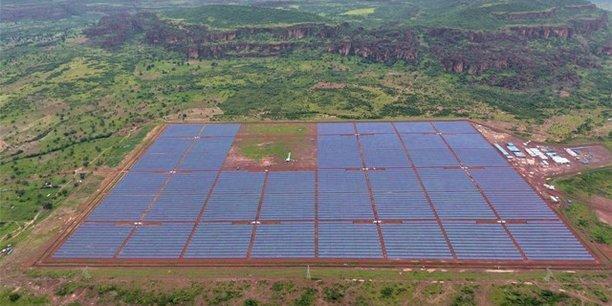
 Sub-Saharan Africa is under-equipped with public services, but infrastructure projects involving private investment have declined since 2012. In order to attract new investors, international institutions are advocating " de-risked " public-private partnerships. But governments should compensate for the losses. This requires a development of the manufacturing industry for consumer goods that will provide jobs and purchasing power to populations that use public services. The budgets of some States could be balanced and the industries consuming energy or other infrastructures would participate considerably in the profitability of these new facilities.
Sub-Saharan Africa is under-equipped with public services, but infrastructure projects involving private investment have declined since 2012. In order to attract new investors, international institutions are advocating " de-risked " public-private partnerships. But governments should compensate for the losses. This requires a development of the manufacturing industry for consumer goods that will provide jobs and purchasing power to populations that use public services. The budgets of some States could be balanced and the industries consuming energy or other infrastructures would participate considerably in the profitability of these new facilities.
Public-Private Partnerships (PPPs) to finance public services and infrastructure
The World Bank is behind the "From Billions to Trillions" project unveiled in 2015 and renamed "Maximizing Finance for Development" in 2018. The financial institution advocates public-private partnerships (PPPs) to leverage the $150 billion in official development loans that multilateral development banks (MDBs) disburse each year to boost investment in public services in under-resourced countries.
According to the IMF, the amount of investment opportunities in public service development in sub-Saharan Africa is estimated to average "20 percent of GDP by the end of the decade" (annual GDP of about $2 trillion). At the France-Africa Summit, French President Emmanuel Macron presented a "new deal" deployed under the France-World Bank Initiative and promoted by the French Development Agency (AFD) to intensify the use of PPPs in Africa.
PPPs in infrastructure projects in sub-Saharan Africa are in free fall
As the IMF publication "How to attract private funds to finance Africa's development? "The limited role of private investors in Africa is also evident internationally: the continent attracts only 2% of global foreign direct investment flows." Many African countries want to enter into PPPs to install public services, but it is unclear whether the expected billions will flow in. According to the World Bank database, these investments are in free fall: "In sub-Saharan Africa, investments in infrastructure projects involving the private sector have fallen from $15 billion in 2012 to $5 billion in 2019.
Several criticisms of public-private partnerships dedicated to public services
The article entitled "The High Cost of “De-Risking” Infrastructure Finance " written on Project Syndicate in 2018 by Howard Mann, Senior Advisor on International Law at the International Institute for Sustainable Development, was already warning. While not doubting the World Bank's good intentions, he wrote of PPP financing: "Many developing countries are now headed straight for a disastrous scenario. In many cases, the risks assumed by governments extend over 20 to 30 years. Throughout this period, governments will face serious challenges in managing public expenditures, and will incur unforeseen costs associated with off-balance sheet commitments and excessive debt, raising the possibility of default on all credit commitments." In December 2020, in the article "Planting budgetary time bombs in Africa: the Macron Doctrine En Marche " published by the Groupe d'Etudes Géopolitiques (GEG) of the Ecole Nationale Supérieure (ENS), two economists, Daniela Gabor (author of the book The Wall Street Consensus, published in 2020) and Ndongo Samba Sylla, denounced the same issues but also the influence of financial markets.
The business model is at least as important as the way infrastructure is financed
These risks are real, and this will probably be true of certain public-private partnerships. But most governments cannot finance public works and often their respective economies, which are not considered bankable, do not allow them to issue bonds or obtain loans. PPPs could therefore be a solution, provided that economic development is also achieved. The type of financing is not the only parameter. The development model is at least as important. If informal employment, which accounts for 85 percent of the sub-Saharan population, remains the rule, revenues will increase little and tax collection will stagnate. But in the case of strong industrialization, the increase in purchasing power, the enrichment of the States and the use of industries would make it possible to make the equipment profitable and to honor the commitments signed.
Limited efficiency of public aid and investments without a global vision
Development aid policy in sub-Saharan Africa has been failing for 60 years. The region's industry is mainly based on the raw materials sector and the processing of agricultural products. Today, most consumer goods are imported from China. Also in an environment devoid of industrial ecosystems, haphazard investments are often futile. The G7 is promising $80 billion over five years to African companies, but whatever the amount, a strategy is essential. Instead of injecting capital here and there without overall coherence, it would be advisable, in order to avoid a loss of efficiency and return, to concentrate it upstream of the industrial sectors that create jobs. Thus, downstream, millions of other service jobs, indirect and induced, would naturally be created. By using such mechanisms, the need for financing and subsidies would be less colossal.
Industrialization remains the only solution to develop the economy of sub-Saharan Africa
30 million Africans enter the labor market each year, so priority must be given to industrial projects. Indeed, in developed countries, it is usually observed that each industrial job generates on average 3 or 4 other induced or indirect jobs, but in countries where everything has to be built, this figure could be multiplied by 2 or 3. This is why it would be relevant to first create the conditions for this industrialization by building the necessary infrastructure and simultaneously setting up sectoral business parks that could accommodate companies, often Western, that would share know-how and constitute, alongside new local companies, efficient ecosystems.
Combining infrastructure projects with an industrialization plan for sub-Saharan Africa
At the 2017 G20 in Hamburg, Chancellor Angela Merkel announced the Compact With Africa (CWA) program, which involved German companies and 12 African countries, including 8 in the sub-Saharan region. Four years later, the program has undoubtedly led to closer ties, but seems to have stalled. More ambitious, the "Africa Atlantic Axis program " (AAA) or "Plan for a regionalisation in the Europe Africa zone" is aimed at companies of all nationalities and would thus offer significant development opportunities to African companies and numerous jobs. It proposes an environmentally friendly industrialization of sub-Saharan Africa from production bases that would be integrated into global value chains (GVCs). They would first be established in countries on or near the Atlantic seaboard in order to facilitate trade with Europe and the United States before gradually expanding to the entire continent. On the other hand, the reasonable increase in production wages that our studies recommend in the framework of the "International Convention for a Global Minimum Wage" project would reduce poverty and thus allow a growing number of Africans to have access to new public services. By moving forward together, manufacturing projects and PPPs creating public services would reinforce each other and thus promote their sustainability. Published August 20, 2021 on la Tribune Afrique
Francis JOURNOT is a consultant and entrepreneur. He leads the program for the industrialization of sub-Saharan Africa or Plan for a regionalisation in the Europe Africa zone or Africa Atlantic Axis program and does economic research for the International Convention for a Global Minimum Wage